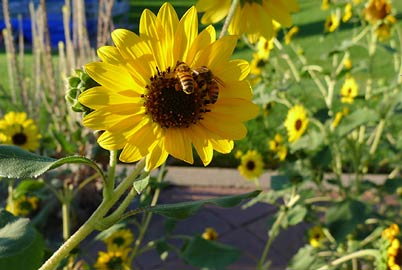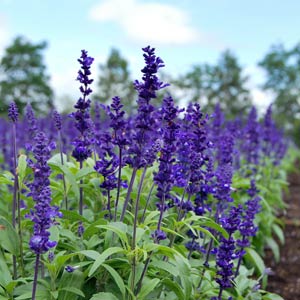Anyone who admires a wildflower meadow or a forest understory sees the big picture at a glance. The plants are densely packed together and few are growing by themselves. The individual plants stand out from the crowd only on a closer look.
 A network of flowering plants provides food for bees, butterflies, and birds.
A network of flowering plants provides food for bees, butterflies, and birds.
Jodi Torpey
It’s often the opposite when it comes to home landscapes. Gardeners usually focus on single plants, instead of trying to create a community or network of plants that naturally grow together.
It doesn’t take a trained horticultural hand or a professional landscape designer to create a network of plants. All it takes is a little planning and keeping nature in mind. Instead of selecting individual plants for their attributes, gardeners consider how each plant fits with the other plants in the community.
The end result is a garden that follows nature’s lead in being functional, beautiful, and manageable.
A functional garden is one that’s planted with purpose, like a rain garden. In areas prone to drenching rains, gardeners plant low spots with bee balm, blazing star, great blue lobelia, Joe Pye weed and cardinal flower. These plants help soak up a heavy rainfall before it washes away.
 In areas that lack reliable precipitation, drought-hardy ornamental grasses, golden yarrows, sunflowers, blanket flowers and colorful salvias such as those shown here, work together to conserve water.
In areas that lack reliable precipitation, drought-hardy ornamental grasses, golden yarrows, sunflowers, blanket flowers and colorful salvias such as those shown here, work together to conserve water.
iStock/Thinkstock
In areas that lack reliable precipitation, drought-hardy ornamental grasses, golden yarrows, colorful salvias, sunflowers and blanket flowers work together to conserve water. Plants like these are more attractive to beneficial insects and other wildlife that contribute to the community, too.
Some gardeners start their plant network by replacing part of their conventional Kentucky blue-grass lawn with native perennial grasses like blue grama grass or prairie dropseed. Both of these grasses are good looking and require less maintenance than ordinary grass.
Another way to help with networking is to plant garden beds that layer up, instead of out. Gardeners can start with vase-shaped vines, like honeysuckle or Dutchman’s pipe, to provide a tall backdrop. The middle layer has plants with tall flower stalks, like brown-eyed Susan or willow leaf sunflower. The bottom layer includes shorter flowers, ornamental grasses and foliage plants. Groundcovers, like spotted dead nettle or sweet woodruff, serve as a living mulch.
A healthy network of plants needs only minor maintenance for maximum impact. For example, apply a natural and organic fertilizer to improve soil fertility. Pull weeds while they’re small. Trim dead stems, but leave the seed heads and berries for wild birds.
By Jodi Torpey, garden writer and author